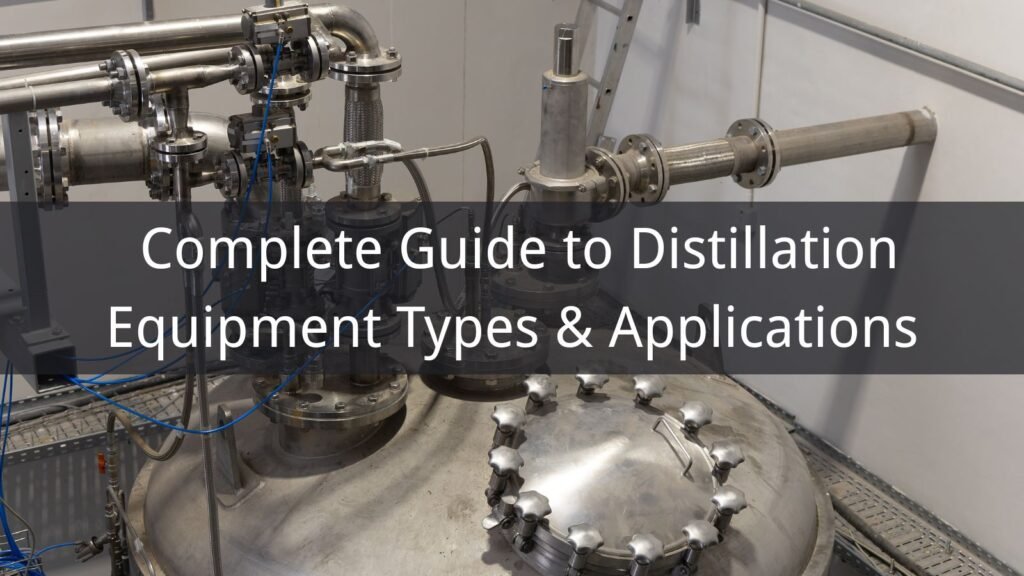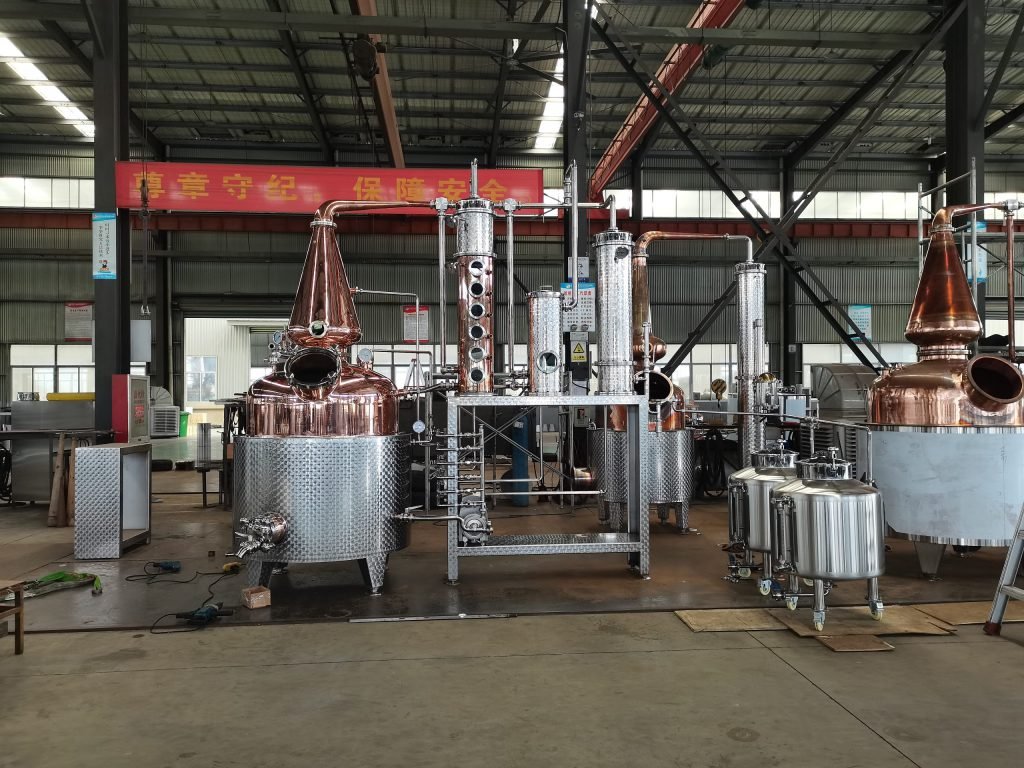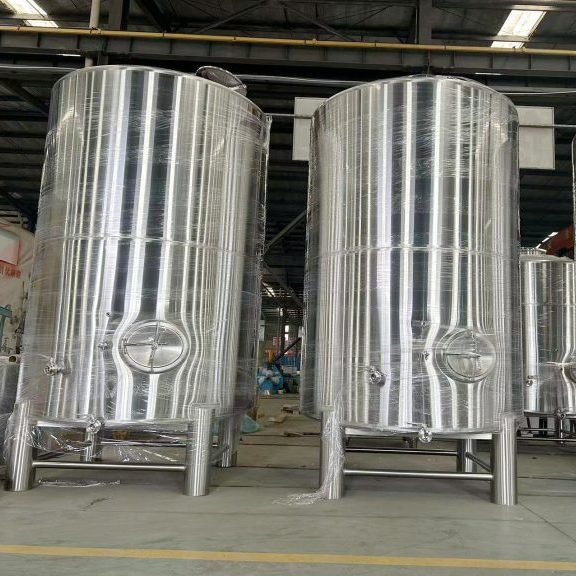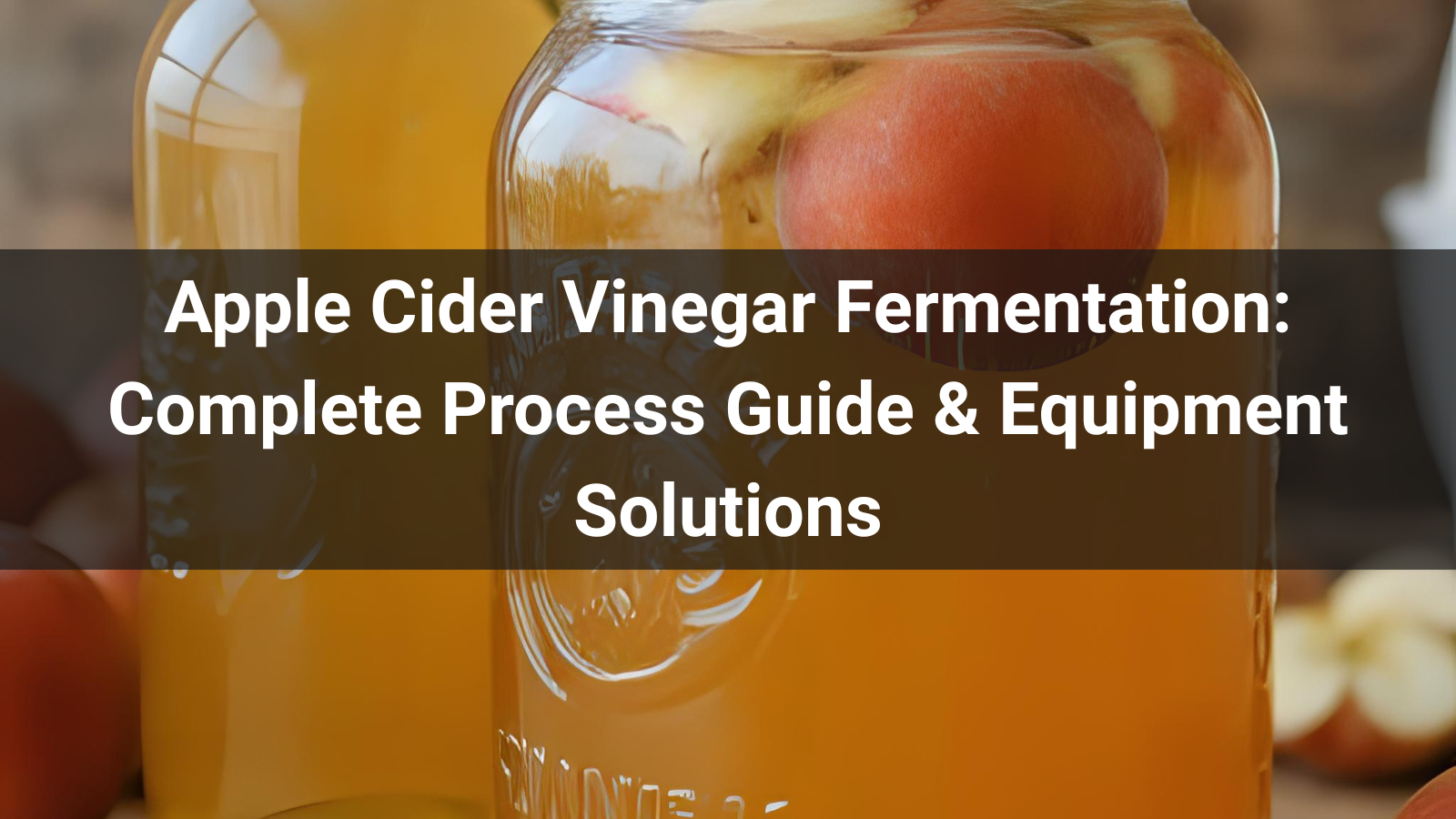
Distillation equipment forms the backbone of any successful spirits production operation, whether you’re craftingartisanal whiskey, premium vodka, or specialty liqueurs. Understanding the different types of distillation equipmentand their specific applications is crucial for making informed decisions that will impact product quality,production efficiency, and long-term profitability. This comprehensive guide explores various distillationtechnologies, from traditional pot stills to modern hybrid systems, helping you choose the right equipment for yourunique production needs.
Table of Contents
- Comparison of Different Types of Distillation Equipment and Their ApplicationScenarios
- Pot Still: The Guardian of Traditional Flavor
- Continuous Distillation Tower: Efficient and Stable Industrial Capacity
- Hybrid Distillation Equipment: Flexible Solutions for a Diverse Market
- Vacuum Distillation Equipment: The “Flavor Guardian” for Low-Temperature FlavorEnhancement
- Steam Distillation Equipment: Enhancing Wine Flavor
- Advantages of Our Distillation Equipment
- How to determine which type of distillation equipment is right for you?
- Choosing the right distillation equipment is the first step to success
Comparison of Different Types of Distillation Equipment and Their Application Scenarios
The distillation industry offers various equipment types, each designed for specific production requirements andspirit categories. Understanding these differences is essential for optimizing your operation and achieving desiredproduct characteristics.
| Equipment Type | Best Applications | Production Capacity | Flavor Profile | Investment Level |
|---|---|---|---|---|
| Pot Still | Whiskey, Brandy, Rum | Small to Medium | Rich, Complex | Medium |
| Continuous Column | Vodka, Neutral Spirits | Large Scale | Clean, Neutral | High |
| Hybrid System | Premium Spirits | Medium to Large | Customizable | Medium-High |
| Vacuum Distillation | Essential Oils, Gin | Small to Medium | Delicate, Aromatic | Medium-High |
| Steam Distillation | Botanical Spirits | Small to Medium | Aromatic, Floral | Medium |
The choice of distillation equipment significantly impacts not only production efficiency but also the finalproduct’s character. Modern distilleries often integrate multiple technologies to achieve optimal results acrossdifferent product lines.
Pot Still: The Guardian of Traditional Flavor
Pot stills represent the most traditional form of distillation equipment, revered for their ability to preserve andenhance the complex flavors inherent in fermented materials. These systems operate on batch principles, allowing forprecise control over each distillation run.
Key Characteristics of Pot Stills:
- Batch Operation: Each distillation cycle is individually controlled
- Flavor Retention: Preserves congeners and aromatic compounds
- Artisanal Control: Master distillers can adjust parameters for each batch
- Traditional Craftsmanship: Maintains centuries-old production methods
Optimal Applications:
Pot stills excel in producing premium spirits where flavor complexity is paramount:
- Single malt whiskey production
- Artisanal rum distillation
- Cognac and brandy manufacturing
- Craft gin production
The copper construction typically used in pot stills provides additional benefits, including sulfur compoundremoval and catalytic reactions that enhance flavor development. Modern pot still designs incorporate improved heattransfer systems and automated temperature controls while maintaining traditional distillation principles.
Production Considerations:
When implementing pot still systems, consider:
- Energy efficiency through heat recovery systems
- Consistent heating patterns for uniform distillation
- Proper sizing based on mash bill volumes
- Integration with fermentationstorage systems
Continuous Distillation Tower: Efficient and Stable Industrial Capacity
Continuous distillation columns revolutionized spirits production by enabling large-scale, consistent manufacturingprocesses. These systems operate continuously, processing raw materials and producing distilled spirits withoutinterruption.
Technical Advantages:
- High Efficiency: Continuous operation maximizes throughput
- Consistent Quality: Automated controls ensure product uniformity
- Energy Optimization: Heat integration reduces energy consumption
- Lower Labor Costs: Minimal manual intervention required
Column Design Variations:
| Column Type | Number of Plates | Typical ABV Output | Primary Use |
|---|---|---|---|
| Rectifying Column | 40-60 | 95%+ | Neutral spirits |
| Stripping Column | 15-25 | 50-70% | Initial concentration |
| Finishing Column | 20-40 | 85-95% | Final purification |
Modern continuous distillation systems often incorporate multiple columns working in tandem, allowing for preciseseparation and purification. These systems are particularly effective for producing high-volume neutral spirits,vodka, and industrial alcohol.
Integration with Fermentation Systems:
Successful continuous distillation operations require seamless integration with upstream fermentation processes.This includes proper sizing of industrialfermentation tanks and efficient material handling systems.
Hybrid Distillation Equipment: Flexible Solutions for a Diverse Market

Hybrid distillation systems combine elements of both pot stills and continuous columns, offering unprecedented
flexibility for modern distilleries seeking to produce multiple product categories with a single equipment platform.
System Components:
- Pot Still Base: Provides traditional flavor development
- Column Section: Enables rectification and purification
- Modular Design: Allows configuration changes
- Advanced Controls: Precise parameter management
Operational Flexibility:
Hybrid systems excel in facilities requiring diverse product portfolios:
- Craft distilleries producing multiple spirit categories
- Contract manufacturing operations
- Research and development facilities
- Premium brand production requiring flavor customization
Economic Benefits:
The versatility of hybrid systems provides significant economic advantages:
- Reduced capital investment compared to separate systems
- Increased facility utilization rates
- Ability to respond quickly to market demands
- Lower maintenance costs through component sharing
When designing hybrid systems, proper integration with mixing tank systems
ensures optimal raw material preparation and consistent feed quality.
Vacuum Distillation Equipment: The “Flavor Guardian” for Low-Temperature Flavor
Enhancement
Vacuum distillation technology represents a sophisticated approach to preserving delicate flavor compounds that
would otherwise be damaged by traditional high-temperature distillation processes. This technology is essential for
premium spirit production and botanical extraction.
Technical Principles:
Vacuum distillation operates on the principle that reducing atmospheric pressure lowers the boiling point of
liquids, enabling distillation at significantly lower temperatures:
- Reduced Temperature: Typically 40-60°C lower than atmospheric distillation
- Preserved Aromatics: Heat-sensitive compounds remain intact
- Enhanced Purity: Selective separation of desired components
- Energy Efficiency: Lower energy requirements due to reduced temperatures
Applications in Premium Spirit Production:
| Application | Temperature Range | Vacuum Level | Key Benefits |
|---|---|---|---|
| Gin Botanicals | 45-55°C | -0.8 to -0.9 bar | Preserved essential oils |
| Fruit Brandies | 50-65°C | -0.7 to -0.8 bar | Enhanced fruit character |
| Essential Oil Extraction | 40-50°C | -0.85 to -0.95 bar | Complete aromatic profile |
System Design Considerations:
Successful vacuum distillation requires careful attention to:
- Vacuum pump sizing and reliability
- Condenser efficiency and temperature control
- System leak prevention and monitoring
- Material compatibility with vacuum conditions
Steam Distillation Equipment: Enhancing Wine Flavor
Steam distillation offers a unique approach to extracting and concentrating aromatic compounds from botanical materials and fermented products. This gentle extraction method is particularly valuable for producing flavored spirits and essential oil-based products.
Process Mechanics:
Steam distillation works by passing steam through the material being processed, carrying volatile compounds that are then condensed and separated:
- Steam Generation: High-quality steam production systems
- Contact Chamber: Optimal steam-material interaction
- Condensation: Efficient vapor-to-liquid conversion
- Separation: Automated product collection systems
Advantages in Flavor Development:
- Gentle extraction preserves delicate aromatics
- No direct heat contact prevents thermal degradation
- Selective extraction of desired compounds
- Minimal energy input compared to direct heating
Steam distillation systems integrate effectively with existing wine fermentation tank operations, allowing for innovative product development and flavor enhancement.
Product Applications:
Steam distillation excels in producing:
- Botanical gin with complex flavor profiles
- Flavored vodkas and specialty spirits
- Essential oil concentrates for liqueur production
- Aromatic extracts for product enhancement
Advantages of Our Distillation Equipment
At Shandong Chenma Machinery Co., Ltd., we bring decades of expertise in designing and manufacturing premium distillation equipment that meets the demanding requirements of modern spirits production. Our comprehensive approach ensures optimal performance, reliability, and product quality.
Customized Design to Fit Every Production Need
Every distillery has unique requirements based on product portfolio, production volume, and operational constraints. Our engineering team specializes in creating tailored solutions that maximize efficiency while maintaining product quality standards.
Customization Capabilities Include:
- Capacity scaling from pilot plant to industrial production
- Integration with existing fermentation and storage systems
- Custom column configurations and tray designs
- Specialized materials for unique product requirements
- Process optimization for specific spirit categories
Our design process begins with comprehensive analysis of your production goals, raw materials, and desired product characteristics. This thorough approach ensures optimal equipment selection and configuration from the outset.
Selected Materials Ensure Quality and Durability
Material selection critically impacts both product quality and equipment longevity. We utilize only premium-grade stainless steel and specialized alloys that meet stringent food safety standards while providing exceptional durability.
Material Specifications:
- 316L stainless steel for all product-contact surfaces
- Copper components for traditional flavor development
- Specialized alloys for high-temperature applications
- Food-grade gaskets and sealing materials
- Corrosion-resistant coatings for external surfaces
Our material selection process considers chemical compatibility, thermal expansion, and long-term reliability to ensure consistent performance throughout the equipment lifecycle.
Intelligent Control Improves Efficiency and Consistency
Modern distillation operations demand precise control and consistent results. Our intelligent control systems provide real-time monitoring, automated adjustments, and comprehensive data logging for optimal performance management.
Control System Features:
- Automated temperature and pressure control
- Real-time product quality monitoring
- Recipe management and batch tracking
- Remote monitoring and diagnostic capabilities
- Integration with existing facility management systems
These advanced control systems not only improve product consistency but also reduce labor requirements and minimize the risk of human error in critical production processes.
Modular Structure for Easy Maintenance and Flexible Expansion
Our modular equipment design philosophy provides significant advantages in maintenance accessibility and future expansion capabilities. This approach reduces downtime and enables gradual capacity increases as your business grows.
Modular Benefits Include:
- Simplified maintenance procedures with accessible components
- Reduced spare parts inventory through standardized modules
- Easy capacity expansion through additional modules
- Flexible equipment reconfiguration for product changes
- Lower total cost of ownership through efficient maintenance
The modular approach also facilitates easier installation and commissioning, reducing project timelines and startupcosts.
One-Stop Service, Hassle-Free from Selection to After-Sales Service
Our comprehensive service approach encompasses every aspect of your distillation equipment project, from initial consultation through long-term support. This integrated service model ensures optimal results and minimizes project complexity.
Complete Service Portfolio:
- Process consultation and equipment selection
- Custom engineering and design services
- Manufacturing and quality testing
- Installation and commissioning support
- Operator training and technical documentation
- Ongoing maintenance and technical support
Our experienced team includes process engineers, equipment specialists, and service technicians who understand the unique requirements of spirits production and can provide expert guidance throughout your project lifecycle.
How to Determine Which Type of Distillation Equipment is Right for You?
Selecting the optimal distillation equipment requires careful evaluation of multiple factors that impact both short-term operations and long-term business success. The following decision framework helps identify the most suitable equipment configuration for your specific needs.
The Type of Liquor You Brew Determines Your Process Priorities
Different spirit categories have distinct production requirements that directly influence equipment selection.
Understanding these requirements is fundamental to making informed decisions.
| Spirit Category | Key Requirements | Recommended Equipment | Critical Parameters |
|---|---|---|---|
| Premium Whiskey | Flavor complexity, tradition | Pot still or hybrid system | Copper contact, batch control |
| Neutral Spirits | High purity, efficiency | Continuous column | High plate count, automation |
| Craft Gin | Botanical preservation | Vacuum or steam distillation | Temperature control, gentle extraction |
| Premium Vodka | Purity, consistency | Multi-column system | Rectification efficiency, filtration |
Consider also the source materials and desired flavor profiles when evaluating equipment options. Grain-based
spirits may require different processing approaches compared to fruit or sugar-based raw materials.
Your Production Needs Determine the Size and Structure of Your Equipment
Production volume requirements significantly impact equipment selection, with considerations extending beyond simple throughput to include operational flexibility and scalability.
Capacity Planning Considerations:
- Current Volume: Immediate production requirements
- Growth Projections: 5-10 year expansion plans
- Product Mix: Multiple products requiring different processing
- Seasonal Variations: Peak and off-season production needs
- Market Flexibility: Ability to respond to demand changes
Right-sizing equipment prevents both overcapacity costs and production bottlenecks. Consider also the integration requirements with existing variable capacity
storage systems for optimal facility utilization.
Do You Seek Flexibility in Flavor Control?
Flavor control capabilities vary significantly among distillation technologies. Facilities focusing on premium products or diverse portfolios require equipment offering precise flavor manipulation capabilities.
Flavor Control Options:
- Cut Point Control: Precise heads, hearts, and tails separation
- Reflux Ratio Adjustment: Fine-tuning purity versus flavor
- Temperature Profiling: Controlling extraction characteristics
- Multiple Column Operation: Staged purification and flavor development
Equipment with advanced flavor control capabilities typically requires higher investment but provides greater market flexibility and premium product positioning opportunities.
Are Your Raw Materials Heat-Sensitive or Complex in Flavor?
Raw material characteristics significantly influence appropriate distillation technology selection. Heat-sensitive or botanically complex materials require specialized processing approaches.
Material-Specific Considerations:
- Fruit-Based Spirits: Require gentle processing to preserve delicate aromatics
- Botanical Ingredients: Need specialized extraction methods
- High-Congener Materials: Benefit from traditional pot still processing
- Heat-Sensitive Compounds: Require vacuum or low-temperature distillation
Understanding your raw material characteristics helps identify processing constraints and opportunities for quality enhancement through appropriate equipment selection.
Are Your Budget and Space Constraints Limited?
Economic and physical constraints often influence equipment selection decisions. However, proper planning can optimize these constraints while maintaining quality objectives.
Cost Optimization Strategies:
- Phased Implementation: Modular equipment allowing gradual expansion
- Multi-Purpose Systems: Equipment capable of producing multiple products
- Energy Efficiency: Lower operating costs through advanced design
- Maintenance Optimization: Reduced lifecycle costs through proper design
| Investment Level | Recommended Approach | Key Benefits | Considerations |
|---|---|---|---|
| Limited Budget | Modular pot still system | Lower initial cost, expansion ready | Higher labor requirements |
| Medium Investment | Hybrid distillation system | Flexibility, moderate automation | Balanced operational complexity |
| High Investment | Automated continuous system | Maximum efficiency, lowest labor | Higher technical complexity |
Choosing the Right Distillation Equipment is the First Step to Success
The selection of appropriate distillation equipment represents a critical decision that impacts every aspect of spirits production, from product quality and operational efficiency to long-term profitability and market positioning. Success requires a comprehensive evaluation process that balances technical requirements, economic constraints, and strategic objectives.
Key Success Factors:
Technical Excellence: Equipment must reliably produce products meeting quality specifications
while providing operational flexibility for market adaptation.
Economic Viability: Total cost of ownership, including initial investment, operating costs, and
maintenance requirements, must align with business financial objectives.
Scalability: Equipment selection should accommodate both current needs and future growth plans
without requiring complete system replacement.
Reliability: Production equipment downtime directly impacts profitability, making reliability a
critical selection criterion.
Implementation Best Practices:
- Conduct thorough feasibility studies before equipment selection
- Engage experienced equipment manufacturers early in the planning process
- Consider total lifecycle costs, not just initial investment
- Plan for operator training and technical support requirements
- Ensure compatibility with existing and planned facility systems
Success in spirits production begins with informed equipment decisions that align technical capabilities with business objectives. The right distillation equipment provides the foundation for consistent quality, operational efficiency, and long-term profitability.
Integration with supporting systems, including proper mixing tank systems for raw
material preparation, ensures optimal overall facility performance and product consistency.
About Shandong Chenma Machinery Co., Ltd.
With over 200 professionals and a 20,000 m² production facility, Chenma specializes in manufacturing high-quality distillation equipment for spirits production. Our comprehensive capabilities include process design, equipment manufacturing, installation, commissioning, and technical training for complete turnkey projects.
Quality Certifications: ISO9001-2005, ISO14001-2015, OHSAS18001-2007, EU CE
Contact Information:
Website: sdchenma.com
WhatsApp: +86 180 6342 1809
Email: admin@sdchenma.com
Address: Pingyuan County Economic Development Zone, Dezhou City, Shandong Province



